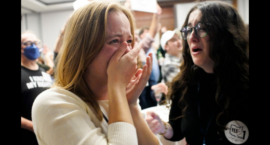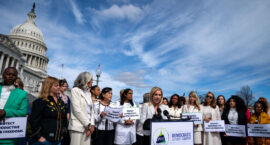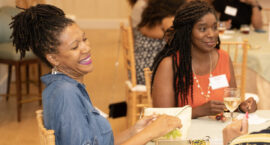
Though her fame as a designer came through the success of her iconic wrap dress, Diane von Furstenberg has said, “I don’t think I had a vocation for fashion; I had a vocation to be a woman in charge.”
Towards the end of the exhibit—on display at the Skirball Cultural Center in Los Angeles until Aug. 31, 2025—a QR code directs visitors to sign up for her more recent innovation: the “InCharge platform,” which serves as “a place to rally, where we use our connections to help all women be the women they want to be.” Its aim urges women to make “first a commitment to ourselves” by “owning who we are” and then to use the platform to “connect, expand, inspire, and advocate.” It is her latest project in a lifetime of advocacy meant to strengthen women.










